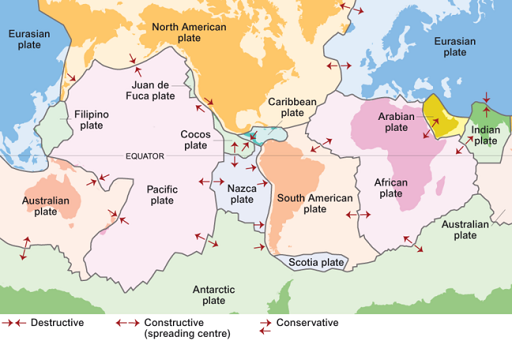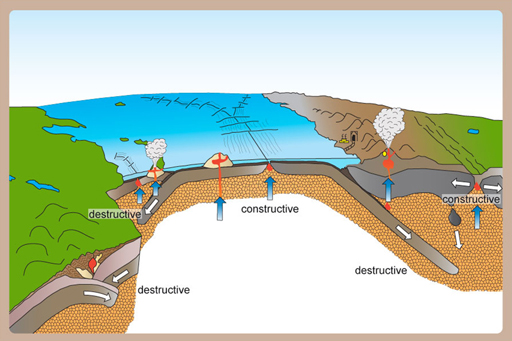1.11 Plate tectonics – part 1
If the sea floor spreading discussed in the previous section were to go on, you might expect that the world would just keep getting bigger and bigger, but this doesn’t happen as the sea floor is destroyed in some places. In this way the continents are moved across the face of the planet.
Continental drift and sea floor spreading combine as two parts of the same theory, ‘plate tectonics’, which sees the whole world as a series of segments, or plates arranged together. Some are continental and oceanic whilst others are purely oceans.
At the boundaries of these plates one of three things can happen. Plates are either being created, destroyed, or just slide past each other. We call these three types of plate margins ‘constructive’, ‘destructive’ and ‘conservative’. If you were to look at the plate margins in cross-section, you would see some of the processes that occur at each place.
At some places new rocks are being formed, while in other places rocks are being buried. Where plates are pushing together, huge pressures build up. You may be beginning to see how these could relate to the places where the igneous, sedimentary and metamorphic rocks that were introduced earlier this week form.


